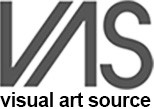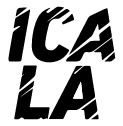The Santa Monica Museum of Art presents Citizen Culture: Artists and Architects Shape Policy, an exhibition that explores the intersection of art and politics and doubles as a platform for open dialogue and engagement. Citizen Culture features the work of artists, architects, designers, creative thinkers, and collectives who have reshaped public policy using aesthetic strategies: Ala Plástica (Silvina Babich and Alejandro Meitín), Tania Bruguera, Suzanne Lacy, Michael Maltzan, The Medellín Diagram (Teddy Cruz, Fonna Forman, Matthias Goerlich, and Alejandro Echeverri), Antanas Mockus with Futuro Moncada, and Tamms Year Ten. Through photographs, videos, maps, drawings, architectural models, performances, and activism, Citizen Culture celebrates the power of art to spark dialogue, create new modes of civic engagement, and transform the laws by which cities and citizens are governed. Organized by independent curator Lucía Sanromán, the exhibition spans projects from six cities in the Americas: Oakland, California; Los Angeles, California; Chicago, Illinois; Medellín, Colombia; Bogotá, Colombia; and La Plata, Argentina. Citizen Culture examines effectiveness and outcomes within the growing field of social practice by exclusively featuring projects that have transformed legislation and society.
The projects in Citizen Culture serve as case studies for how artists can work directly with municipal governments, NGOs, legislators, and advocates to effect change. They reveal the extraordinary potential for art to address critical contemporary issues including prison reform, citizen participation, immigration, environmental policy, and socially-responsible urban development.
Argentinean collective Ala Plástica (Silvina Babich and Alejandro Meitín) oversaw the cleanup of the 1999 oil spill in the Rio de la Plata estuary—the largest freshwater oil spill in history. They worked with local authorities and an UNESCO agency, and prepared evidence against the Shell transnational oil company. For Citizen Culture, Ala Plástica takes up residence at SMMoA for one month to work with local students and Friends of the Los Angeles River, a non-profit dedicated to restoring the natural and historic heritage of the L.A. River. Their installation at SMMoA serves as a sculptural documentation of the 1999 cleanup and as a platform for public discussions within the Museum.
Performance artist Tania Bruguera stages a political movement within SMMoA's exhibition space, engaging Citizen Culture attendees and local immigration advocates in a large-scale postcard campaign known as The Francis Effect. The Francis Effect's broad aim is to challenge public perceptions of immigration through a participatory, artist-driven response. Bruguera and her collaborators collect signatures on postcards addressed to Pope Francis, which endorse his supportive stance toward immigrants and, adopting the concept of Vatican City as a state with open borders, urge the Pope to grant Vatican citizenship to undocumented immigrants worldwide. The Francis Effect is presented by the Santa Monica Museum of Art in collaboration with the Solomon R. Guggenheim Museum as part of the Guggenheim UBS Global Art Initiative and the Meadows School of the Arts, Southern Methodist University.
Urban theorist Teddy Cruz, political theorist Fonna Forman, graphic designer Matthias Goerlich, and architect and urbanist Alejandro Echeverri present The Medellín Diagram, a visualization of the complex civic processes that enabled Medellín's renowned transformations under Mayor Sergio Fajardo (2003-2007). The Diagram presents the changes to Medellín's architecture and infrastructure as a political project, through which institutions reimagined protocol, collaborated, and confronted socio-economic inequality. The Medellín Diagram visualizes the steps required to improve civic life, build a new political reality, reimagine governance, engage the complexity of process, and sustain all of the above through cooperation with communities over time.
Artist Suzanne Lacy's participatory, legislative project No Blood/No Foul represents her work with Oakland youth activists, City Council, and the Mayor's Office to draft a new youth policy in 1997. On June 5, 1997, the eve of the Oakland City Council's vote on a newly drafted Youth Policy Initiative, Lacy staged a performance in the form of a basketball game between youth and police officers. No Blood/No Foul was a collaboration with Michelle Baughan, Stan Hebert, Annice Jacoby, Chris Johnson, Councilwoman Sheila Jordan, Mike Shaw, Officer Terrance West, and Frank Williams. The project was one of The Oakland Projects, a series of eight public initiatives Lacy organized with youth and adult collaborators under the acronym TEAM (Teens, Educators, Artists, and Media Makers) between 1991 and 2000. No Blood/No Foul and its legislative processes are presented as a video and mixed media installation created for Citizen Culture.
Citizen Culture also highlights the work of Michael Maltzan Architecture, whose Star Apartments (2013) provide permanent, supportive shelter for downtown Los Angeles' homeless community. Maltzan collaborated with the Skid Row Housing Trust to create the Apartments, a six-story, 95,000 square foot building designed to address density through an integrated approach: a retail zone at the street level, a second level for community programs and social services, and four terraced floors of residences above. The project, installed at SMMoA as a scale model and archival documentation, raised the bar for social housing in Los Angeles by pioneering an advanced coordination protocol between city and state agencies that enabled the use of prefabricated construction, the first application of this building method for a multi-unit residential project in the city in over thirty years.
Antanas Mockus, a charismatic academic trained in mathematics and philosophy, served as Mayor of Bogotá from 1995 to 1997 and again from 2001 to 2003. During his first candidacy, he announced plans to lower Bogotá's extraordinarily high violent death rate through pedagogical, participatory, and performance-based outreach, rather than through increased law enforcement. His plans became the Cultura Ciudadana or Citizen Culture policies, implemented during his first term and continued over his second. Working with Mockus and Colombian-born, Mexico-based researcher, designer, and artist Futuro Moncada, Lucía Sanromán has developed a cohesive visual presentation of the key Citizen Culture actions at the core of Mockus' successful transformation of civic life in Bogotá.
Citizen Culture: Artists and Architects Shape Policy also includes the work of Tamms Year Ten (TY10), a legislative art project led by artist Laurie Jo Reynolds in conjunction with an activist coalition of prisoners, exprisoners, families, and citizens. As a lobbying campaign, TY10 successfully petitioned against Chicago's Tamms Supermax Prison, which closed on January 4, 2013 by Governor Pat Quinn's decree. TY10 blurs the lines between lobbying and art by utilizing traditional artistic platforms—exhibitions, catalogues, photography exhibits, and conceptual art forms—toward openly political ends. Citizen Culture presents Tamms Year Ten through a recreation of the original TY10 campaign office, an installation of office furniture, paperwork, emails, letters, campaign posters, and artworks used in protests, meetings, and political lobbying.
Citizen Culture: Artists and Architects Shape Policy explores the powerful, transformative connection between utopian artistic invention, legislative processes, and the delicate ecologies of public life. Graphics, exhibition design, and participatory tools are created by Buró-Buró, a Mexico-City based interdisciplinary office that works on strategies to address contemporary planning and policy issues through art and design.
Lucía Sanromán is an independent curator and writer. From 2006 to 2011, she served as Associate Curator at the Museum of Contemporary Art San Diego. Recent projects include the retrospective exhibition inSite: Cuatro ensayos de lo público, sobre otro escenario, at Proyecto Siqueiros: La Tallera, in Cuernavaca Mexico in (March 2014). She is co-curator with Candice Hopkins, Janet Dees, and Irene Hofmann of the reinvented SITE Santa Fe's biennial SITElines.2014: Unsettled Landscapes (July 2014). She is an awardee of the Andy Warhol Foundation for the Visual Arts Curatorial Research Fellowship (2012) and the Pew Center for Arts & Heritage Fellowship (2014).
Generous support for this exhibition has been provided by the Andy Warhol Foundation for the Visual Arts, The Neeley Family Fund at The San Diego Foundation, the Elizabeth Firestone Graham Foundation, and Fundación Jumex Arte Contemporáneo. Additional funding has been provided by SMMoA's Ambassador Circle and Susan O'Connor.
The Santa Monica Museum of Art is supported, in part, by the Los Angeles County Board of Supervisors through the Los Angeles County Arts Commission as well as the City of Santa Monica and the Santa Monica Arts Commission.
Draw the Line: Make a Picket Sign
Saturday, October 25, 2014, 11am-3pm
FREE Admission | All Ages
Stand up and speak out! Learn to make a picket sign using hand-drawn graphics, a clear and clever message, and the transformative power of art. Admission is free, the workshop is open to all ages, and supplies are provided. Draw the Line: Make a Picket Sign is presented by the Santa Monica Museum of Art and the Big Draw LA. The Big Draw is an annual celebration of the act of drawing, which creates participatory opportunities for people of all ages to discover that drawing can help us look more closely, think more creatively, and have fun in the process. Ryman Arts launched the inaugural Big Draw LA in October 2010. By 2011, the events more than doubled with over 10,000 Angelenos drawing during the month-long initiative.
For further information about the exhibition or to schedule interviews, please contact Lynda Dorf at lynda.dorf@smmoa.org or (424) 645-4620.
About the Santa Monica Museum of Art
Through its exhibitions, education, and outreach programs, the Santa Monica Museum of Art fosters diversity, innovation, and discovery in contemporary art. The Museum celebrates: expanding boundaries; exploring individual differences; enhancing public knowledge of art; and broadening the art experience. SMMoA is a collection of ideas.
GRACIE: At the Santa Monica Museum of Art
GRACIE is SMMoA's retail store. A multifunctional shop/storage/installation conceived by artist and architect Allan Wexler, GRACIE offers an inspired selection of merchandise that reflects the Museum's unique mission. GRACIE is named in honor of Board Member and former President Laura Donnelley (aka Gracie), a visionary patron of the arts and SMMoA muse. Shopping at GRACIE is now available online at www.shopsmmoa.org.
Location, Hours, Admission
SMMoA is located at the Bergamot Station, Building G1, 2525 Michigan Avenue, Santa Monica, California. The Museum is open Tuesday through Saturday from 11 am to 6 pm, closed Sunday, Monday, and all legal holidays. Suggested donation: $5; $3 for seniors and students. For further information about exhibitions and programs, please call (310) 586-6488 or visit www.smmoa.org.
Santa Monica Museum of Art: original, dynamic, intrepid, discerning, enlightened, influential, agile, approachable, inventive, authentic





